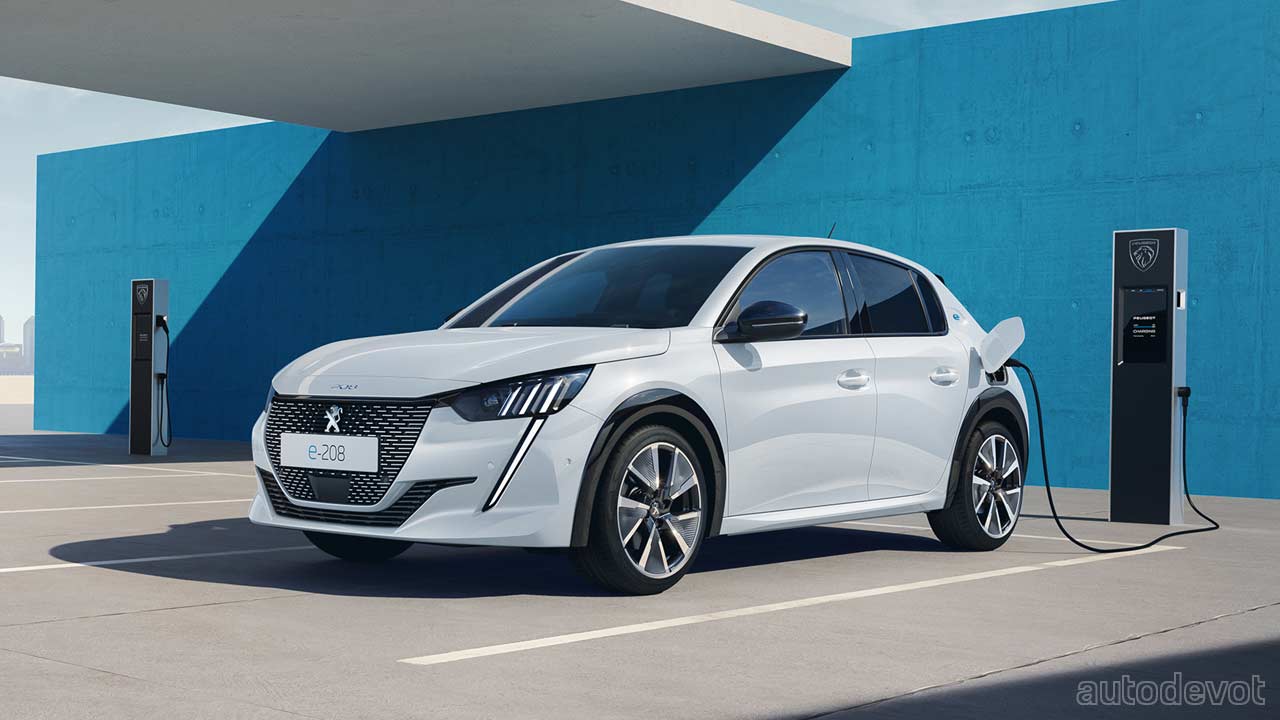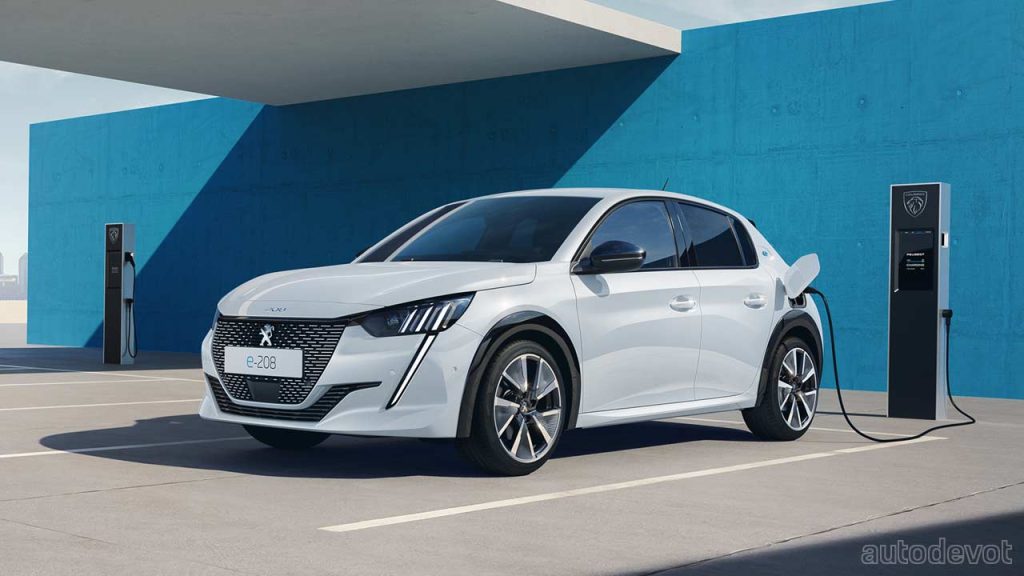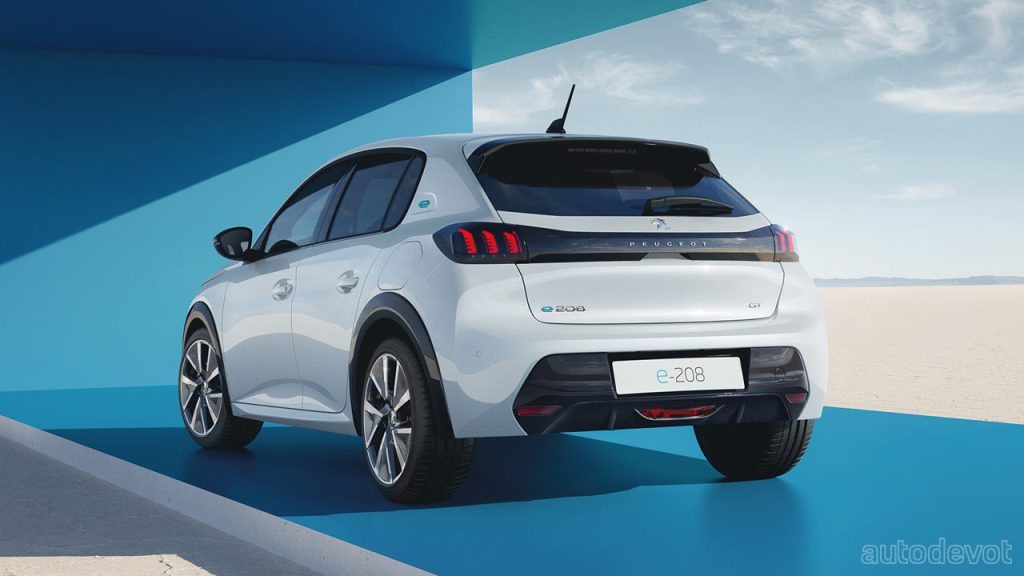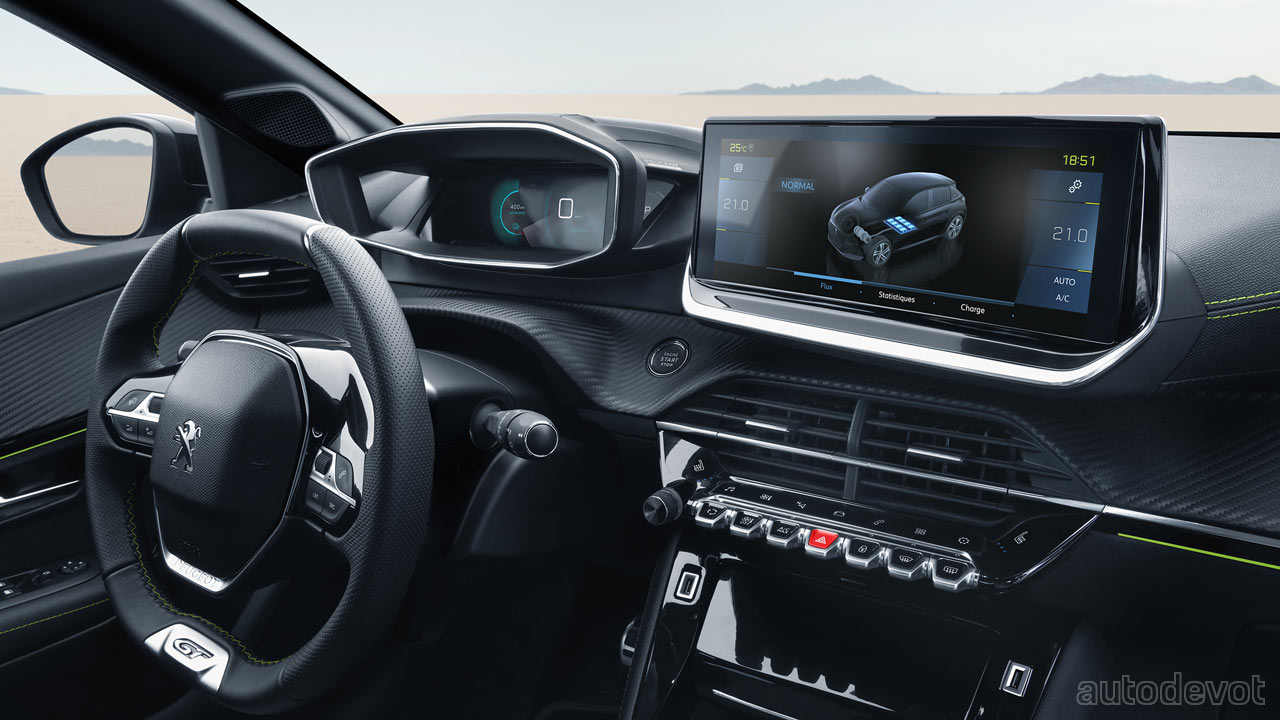Peugeot has updated the e-208 for 2023 with increased power and range. Depending on the market, the 2023 e-208 will go on sale sometime next year, but in the meantime, let’s take a look at all the hoopla.
Speaking of which, visually, there’s nothing to talk about. The 2023 e-208 looks exactly the same as it looked in early 2019; not that it needs to look any better. It continues to look sharp and stunning for a B-segment supermini. What has changed, however, is what’s underneath that body. According to Peugeot, the 2023 e-208 borrows the e-motor from the e-308, and as a result, the power output is up by 15 kW (20 metric hp) to 115 kW (156 metric hp), while the torque remains the same at 260 Nm (192 lb-ft).
Apparently, there’s also a new, more-efficient 400-volt battery pack with 51 kWh (48.1 kWh usable) of energy content, estimated to deliver an extra 38 km (23.6 mi) range. Thanks to efficiency measures, the average consumption is claimed to be 12 kWh/100 km. In the French market, the e-208 currently claims a range of up to 362 km (225 mi); which means, with these new updates, the e-208 can deliver up to 400 km (248.5 mi) as per the WLTP cycle. The e-208 originally claimed a 340 km (211 mi) range, which was updated to 362 km at the end of 2021, thanks to some work on increasing its efficiency.
Some of the efficiency increasing measures taken last year have been carried over into the new model. These would include a heat pump coupled with a humidity sensor installed on top of the windscreen maximizing the energy efficiency of the heating and air conditioning. The information transmitted by the sensor makes it possible to control the air recirculation in the passenger compartment more accurately and, ultimately, to preserve the amount of energy contained in the battery when heating and maintaining the temperature inside the vehicle. Also, energy class A+ tyres wrapped around 16-inch wheels minimizes energy loss through friction. And finally, a more efficient gear ratio.

Leave a Reply
Note: Comments that are unrelated to the post above get automatically filtered into the trash bin.



































